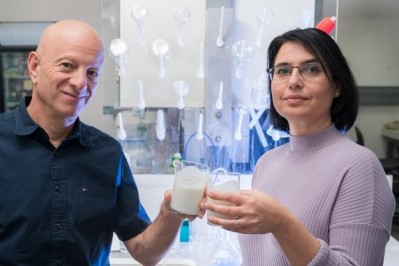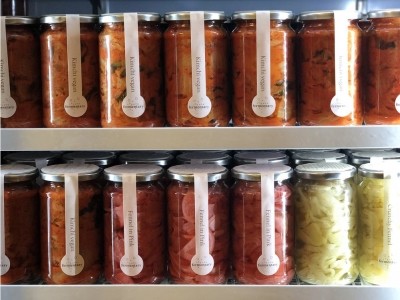Fermented food-based lactic acid bacteria linked to gut microbiome health

The paper represents the first systematic analysis of the prevalence and relative abundance of LAB in human gut metagenomes, supporting yogurt, cheese and kefir’s role as a bacterial source for the transient microbiome.
“Fermented foods are the principal ecological niche for LAB in nature,” says professor Danilo Ercolini, senior author of the study, who is based at the University of Naples Federico II in Italy.
“Our results support the hypothesis that food is the major source of LAB for the gut microbiome. This research also offers hints and methodologies to implement novel strategies for tracing the life of probiotics and other LAB from foods and/or supplements all the way to the human body.
“This research opens new horizons for studies on potentially health promoting foods,” he adds.
LAB-enriched foods or supplements
As a key microorganism in the gut microbe community, LAB has garnered much interest due to their potential in adding functional properties to certain foods or as supplements.
Despite much research concentrating on assessing LAB in food, interactions with the human gut microbiome are still not entirely understood.
Ingested LAB must survive the gut’s physical and chemical obstacles as well as challenging numerous diffident species before applying its beneficial effects on the body.
LAB could be viewed as elements of the transient gut microbial community, originating externally from a likely food source, regularly interacting with the longer-term members of the gut microbiome.
Further talking points concern the extent to which elements of the food microbiome are actively transferred to become part of the gut microbiome and what role they play in this complex environment.
In addition, foods, production technologies and fermentation processes can determine the LAB species and strains fermented foods can harbour.
These foods are natural sources of live microorganisms that are consumed daily and can potentially interact with the gut microbiome.
Along with colleagues from University of Trento (Italy), Teagasc (Ireland) and the APC Microbiome Ireland SFI Research Centre (Ireland), the team began analysing the genetic data from LAB strains (genomes) found in fermented foods and in human faeces.
Using computational analysis tools, LAB genomes were reconstructed from about 300 foods and nearly 10,000 human faecal samples from different continents, looking at the distribution of LAB in humans based on geographical origin, age and lifestyle.
Study results
Results suggested LAB were found in relatively low abundance in the human faeces and their prevalence depended on age, lifestyle and geography.
The LAB most frequently found in the human faeces were Streptococcus thermophilus and Lactococcus lactis, which are commonly found in yogurt and cheese.
The DNA sequences of about 3,000 LAB genomes were also compared; and analysis revealed a high level of similarity of LAB from food with those of LAB from the human gut.
This new finding suggests that consuming foods rich in LAB can enrich our intestines with these potentially probiotic microorganisms.
“Our large-scale genome-wide analysis demonstrates that closely related LAB strains occur in both food and gut environments and provides unprecedented evidence that fermented foods can be indeed regarded as a possible source of LAB for the gut microbiome,” the study suggests.
“The interest in LAB will keep the scientific community active in studies of their genomics and evolution.
“Some of the LAB species occurring in the gut can surely arise from the consumption of fermented foods or probiotic preparations,” it adds.
“However, efforts in research and isolation of LAB from human specimen would be desirable in the future in order to have further evidence on their specific genomic features that may better reflect adaptation to the complex gut ecosystem.”
Source: Nature Communications
Published online ahead of print: doi.org/10.1038/s41467-020-16438-8
“Large-scale genome-wide analysis links lactic acid bacteria from food with the gut microbiome”
Authors: Edoardo Pasolli et al.















